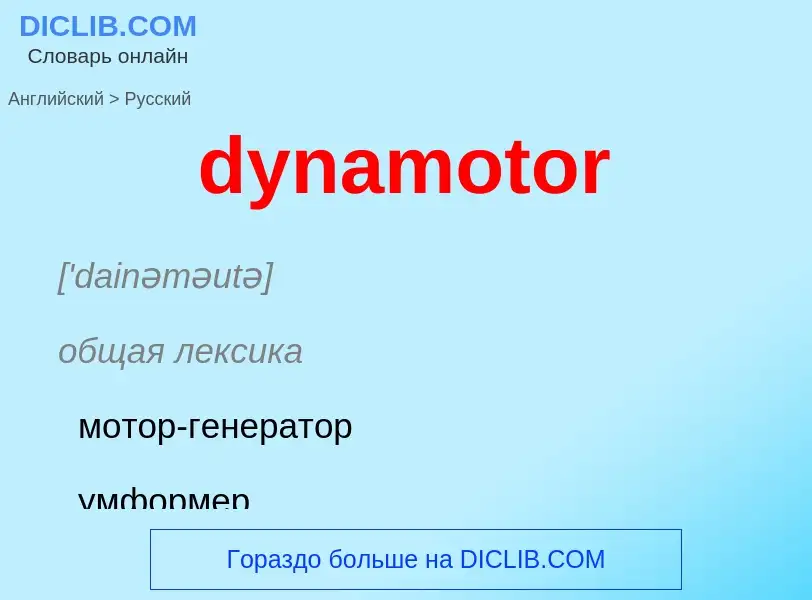Vertaling en analyse van woorden door kunstmatige intelligentie ChatGPT
Op deze pagina kunt u een gedetailleerde analyse krijgen van een woord of zin, geproduceerd met behulp van de beste kunstmatige intelligentietechnologie tot nu toe:
- hoe het woord wordt gebruikt
- gebruiksfrequentie
- het wordt vaker gebruikt in mondelinge of schriftelijke toespraken
- opties voor woordvertaling
- Gebruiksvoorbeelden (meerdere zinnen met vertaling)
- etymologie
dynamotor - vertaling naar russisch
['dainəməutə]
общая лексика
мотор-генератор
умформер
существительное
электротехника
динамотор
двигатель-генератор
общая лексика
генератор-двигатель
[məutə'dʒenəreitə]
электротехника
мотор-генератор
строительное дело
двигатель-генератор, мотор-генератор
Definitie
Wikipedia

A motor–generator (an M–G set) is a device for converting electrical power to another form. Motor–generator sets are used to convert frequency, voltage, or phase of power. They may also be used to isolate electrical loads from the electrical power supply line. Large motor–generators were widely used to convert industrial amounts of power while smaller motor–generators (such as the one shown in the picture) were used to convert battery power to higher DC voltages.
While a motor–generator set may consist of distinct motor and generator machines coupled together, a single unit dynamotor (for dynamo–motor) has the motor coils and the generator coils wound around a single rotor; both the motor and generator therefore share the same outer field coils or magnets. Typically the motor coils are driven from a commutator on one end of the shaft, while the generator coils provide output to another commutator on the other end of the shaft. The entire rotor and shaft assembly is smaller, lighter, and cheaper than a pair of machines, and does not require exposed drive shafts.
Low-powered consumer devices such as vacuum tube vehicle radio receivers did not use expensive, noisy and bulky motor–generators. Instead, they used an inverter circuit consisting of a vibrator (a self-exciting relay) and a transformer to produce the higher voltages required for the vacuum tubes from the vehicle's 6 or 12 V battery.


